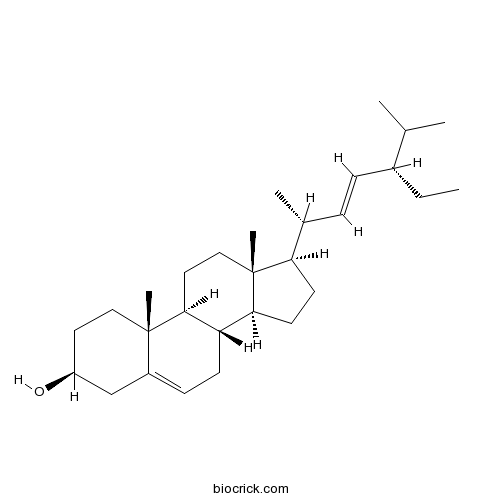Tridax procumbens
Tridax procumbens
1. The products in our compound library are selected from thousands of unique natural products; 2. It has the characteristics of diverse structure, diverse sources and wide coverage of activities; 3. Provide information on the activity of products from major journals, patents and research reports around the world, providing theoretical direction and research basis for further research and screening; 4. Free combination according to the type, source, target and disease of natural product; 5. The compound powder is placed in a covered tube and then discharged into a 10 x 10 cryostat; 6. Transport in ice pack or dry ice pack. Please store it at -20 °C as soon as possible after receiving the product, and use it as soon as possible after opening.
Natural products/compounds from Tridax procumbens
- Cat.No. Product Name CAS Number COA
-
BCN4376
Stigmasterol83-48-7
Instructions

Asterid Ray Floret Traits Predict the Likelihood of Florivory by the Polyphagous Katydid, Phaneroptera brevis (Orthoptera: Phaneropterinae).[Pubmed: 30085192]
Insect-flower visitation is crucial for many angiosperms because insects can facilitate pollination. Floral traits can attract pollinators so studying how they correlate with insect-flower visitation can elucidate how insects and plants interact and coevolve. However, there are few studies on how floral traits correlate with florivory. Not all floral traits that predict attractiveness of flowers to pollinators are applicable for florivory because they may not necessarily reflect the palatability of the flower parts. Leaf functional traits have been studied extensively to predict herbivory, but we are not aware of studies that adopt such leaf traits in florivory. We addressed these limitations by investigating the research questions: 1) How do floral traits differ among different species? 2) How do the floral traits predict the likelihood of florivory? We measured 10 floral traits, including adopting common leaf traits associated with herbivory (e.g., specific leaf area and leaf dry matter content), among three Asteraceae species: Bidens pilosa L., Sphagneticola trilobata (L.) Pruski, and Tridax procumbens L. We then performed the cafeteria assay using a polyphagous floriphilic katydid, Phaneroptera brevis (Serville 1838). We found that ray floret dry matter content correlates negatively with the likelihood of florivory of the asterid ray floret, whereas the total biomass of the ray floret correlates positively with the likelihood of florivory of the entire capitulum. The specific ray floret area also correlates nonlinearly with the likelihood of florivory of the asterid ray florets. We believe that these florivory traits can be applied to the flowers of other species.
Glyphosate Resistance in Tridax procumbens via a Novel EPSPS Thr-102-Ser Substitution.[Pubmed: 29985610]
This study confirmed the first case of glyphosate resistance in Tridax procumbens and investigated the glyphosate-resistance mechanisms. Sequencing and cloning of the full 5-enolpyruvylshikimate-3-phosphate synthase (EPSPS) coding sequences revealed a point mutation (ACC to TCC) at amino acid position 102, resulting in a novel Thr-102-Ser substitution. Other possible resistance mechanisms (i.e., target-site EPSPS-gene overexpression, nontarget-site differential glyphosate uptake and translocation) were also examined and were unlikely to be involved in resistance in this population. Structural modeling of the wild-type and mutant EPSPS in complex with glyphosate and phosphoenolpyruvate (PEP) revealed that the Thr-102-Ser substitution weakly decreased EPSPS affinity to glyphosate, but sharply increased EPSPS affinity to the natural substrate, PEP. Therefore, this novel mutation is very likely responsible for the observed glyphosate resistance in this tetraploid weed species via dual mechanisms of reducing glyphosate binding and favoring PEP binding to EPSPS.
Effects of aqueous leaf extract of Tridax procumbens on contractile activity of corpus cavernosum in N-nitro-l-arginine methyl ester-induced hypertensive male rats.[Pubmed: 29397093]
This study investigated the effects of aqueous leaf extract of Tridax procumbens (ALETP) on contractile activity of corpus cavernosum in N-nitro-l-arginine methyl ester (l-NAME)-induced hypertensive male rats.
Tridax procumbens flavonoids: a prospective bioactive compound increased osteoblast differentiation and trabecular bone formation.[Pubmed: 28886722]
The Tridax procumbens extracts (TPE) are known for their ethno-medicinal properties to increase osteogenic functioning in mesenchymal stem cells. Recently, we found that the T. procumbens flavonoids (TPF) significantly suppressed the RANKL-induced osteoclasts differentiation and bone resorption. The TPF also promoted osteoblasts differentiation and bone formation demonstrated by increasing bone formation markers in cultured mouse primary osteoblasts. However, the effects of the TPF on in vivo bone formation remain unclear. In this study, we investigated the effects of the TPF on in vivo bone formation, injected the TPF (20 mg/kg) twice a day in the low calcium diet mice and killed them after 21 day. Radiographic and histomorphometric analyses were performed on the dissected bones to determine the anabolic effects of the TPF.
Bioassay-guided isolation of active principles from Nigerian medicinal plants identifies new trypanocides with low toxicity and no cross-resistance to diamidines and arsenicals.[Pubmed: 28336470]
Leaves from the plant species studied herein are traditionally used in northern Nigeria against various protozoan infections. However, none of these herbal preparations have been standardized, nor have their toxicity to mammalian cells been investigated. In search of improved and non-toxic active antiprotozoal principles that are not cross-resistant with current anti-parasitics, we here report the results of the in vitro screening of extracts from seven selected medicinal plant species (Centrosema pubescens, Moringa oleifera, Tridax procumbens, Polyalthia longifolia, Newbouldia laevis, Eucalyptus maculate, Jathropha tanjorensis), used traditionally to treat kinetoplastid infections in Nigeria, and the isolation of their bioactive principles.
Mechanism of vasorelaxation induced by Tridax procumbens extract in rat thoracic aorta.[Pubmed: 27104039]
Tridax procumbens (Linn) (Asteraceae) is one of the herbs widely distributed in many parts of the world. Its leaves have long been used for the treatment of hypertension in Nigeria. Previous studies have shown that aqueous leaves of T. procumbens extract (TPE) lowers blood pressure through endothelium-dependent and -independent mechanism in the aortic rings isolated from normotensive rats. The aim of the present study was to further investigate mechanisms of TPE-induced relaxation in the aortic artery by assessing its mechanistic interactions with nitric oxide (NO) synthase, cyclic guanosine monophosphate (cGMP), and cyclic adenosine monophosphate (cAMP).


